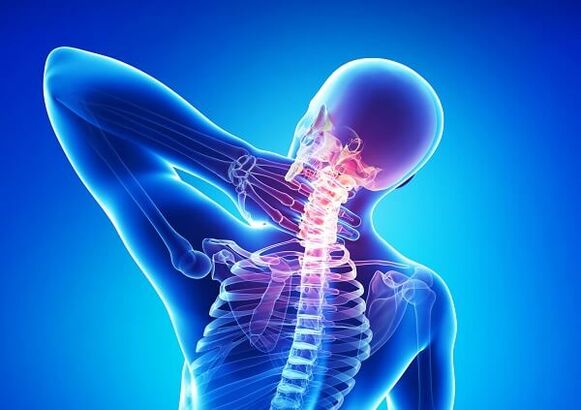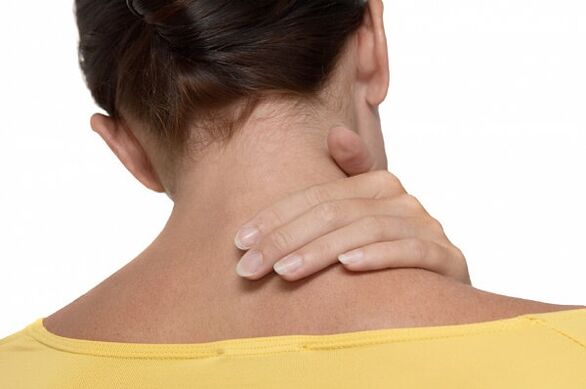
Cervical osteochondrosis can be called one of the most common pathologies of the spine today. At the same time, according to statistics, it can be noted that more and more young people are sick with this degenerative disease, it was previously believed that osteochondrosis occurs only in the elderly. It is worth knowing the symptoms of cervical osteochondrosis and home treatment, because the earlier the pathology is detected and treatment is started, the less likely complications are to occur.
Osteochondrosis of the cervix is a degenerative disease of the cervical spine, in which the intervertebral disc is destroyed. The pathology develops quite slowly, but it must be borne in mind that most degenerative changes are irreversible.
Stages of the disease
The following stages of cervical osteochondrosis are distinguished from the initial changes, which practically do not cause pain and other symptoms, until the complete destruction of the intervertebral disc:
- Preclinical stage. At this stage, there are no visible signs of degenerative changes, they occur at the biochemical level. The patient does not show pain or other changes in his condition.
- The stage at which degenerative changes in the nucleus accumbens increase. Changes in the nucleus accumbens lead to destabilization of the cervical spine, disturbances in the structure of the fibrous disc occur. The patient begins to experience mild pain and other symptoms.
- The stage of complete destruction of the fibrous ring. There is a protrusion of the intervertebral disc - the nucleus accumbens begins to extend beyond the damaged fibrous ring, displacement and overflow of the cervical vertebrae occur. Pain syndrome and other symptoms of the disease increase significantly.
- The stage of regeneration of the intervertebral disc tissues. The nucleus accumbens begins to be replaced by fibrous tissue, the tissues of the intervertebral disc and the adjacent structures of the spine become involved in degenerative processes. With the development of intervertebral disc fibrosis, the pain and instability disappear, but this condition does not mean recovery.
Great!Periodically, worsening of the disease can occur with increased symptoms, usually after increased physical exercise.
The earlier treatment of the disease begins, the easier it is to achieve inhibition of degenerative changes. At the same time, the clinical manifestations of cervical osteochondrosis differ in their diversity, it is often impossible to diagnose the disease without a complete diagnosis, X-ray, MRI or CT.
Symptoms
The main difficulty in detecting osteochondrosis of the cervix is insufficiently expressed and there are no obvious symptoms. In addition to pain syndrome, there are many herbal symptoms that can speak to diseases of the nervous or circulatory system, so they often come to the recognition of osteochondrosis through misdiagnosis.
Autonomic symptoms in men are often considered less severe than pain. Perhaps this is due to the fact that men are less likely to see a doctor with symptoms of neurological diseases. In women, the autonomic symptoms associated with the emotional sphere are considered more pronounced.
In general, the following symptoms usually refer to the main symptoms of osteochondrosis of the cervical spine and should be present at the same time:
- Pain syndrome. The pain appears in the neck and shoulders, spreads to the shoulders. It can also spread to the back of the head. Also, with osteochondrosis, headache and dizziness may occur.
- Plant symptoms. Due to the pinching of nerve endings and blood vessels in the cervical spine, they appear in the cervical spine. Headaches, dizziness, nausea, palpitations, symptoms similar to those of a panic attack.
- Feeling numb, restriction of mobility in the upper extremities, in the area of the shoulders. This symptom also occurs due to perforated nerve endings in the cervical spine.
These are the main symptoms that occur in cervical osteochondrosis, often the pain syndrome is so weak that the cause of the illness begins to be sought in the field of neurology.

How to treat cervical osteochondrosis at home
Home treatment of cervical osteochondrosis is possible in the early stages of the disease. Treatment must be comprehensive, including pain medication, therapeutic exercises, massage and a range of other procedures. Every component of the treatment is necessary for complete recovery.
Medication
Pain relievers are usually needed, starting with over-the-counter non-steroidal anti-inflammatory drugs. If such drugs do not help, they resort to the use of exclusions - injections with anesthetics at the site of injury.
Topical corticosteroid ointments may also be used. You have to be careful with their use, because if used irrationally, it can harm. Such funds are strictly prescribed; their use is prohibited.
Also, with severe plant symptoms, means can be used to improve the blood supply to the brain. They are prescribed in rare cases. Sometimes, in addition to these, sedatives are used during the day, which help to suppress the depressive symptoms that result from the sting of the nerve endings.
Massage
With osteochondrosis, the massage of the cervical spine is important, it helps to restore blood circulation, to relieve tension from muscle tension. Many different massage techniques are used, self-massage is allowed at home, to perform it, you have to tilt your head forward in a sitting position, put your hands on your neck on both sides.
Great!Under no circumstances should you put pressure on the spine, otherwise the pain syndrome may worsen.
With caressing movements, you should move from the base of the head to the shoulders, trying to push but not cause pain. The process should be continued for 10 to 15 minutes.
Gymnastics
Exercise for osteochondrosis of the cervical spine is extremely important for maintaining muscle tone and mobility of the cervical spine. With this disease, the neck muscles need to be trained.
The simplest exercise - in a sitting position, you should put your hands under your chin, push them slightly upwards. At the same time, you need to resist the pressure of the head. The exercise should be performed for fifteen seconds, over time, the duration should be increased.

Diet
With osteochondrosis, it is recommended that you start eating better, including more fresh vegetables and fruits in your diet. It is also recommended that you eat more fermented seafood and dairy products to replenish the amount of substances needed for the proper functioning of the musculoskeletal system.
Treatment with folk remedies
Folk remedies are not as effective in treating cervical osteochondrosis, but there are some recipes that will help with this disease. First of all, various compresses are recommended, one of the most effective being the potato. Raw potatoes should be grated, add a tablespoon of honey, put on a toothache, cover with cling film.
Potatoes can be replaced with unleavened unleavened dough. In the absence of inflammation, the compress can be covered with a warm cloth for greater effect. You can also lubricate the cervical area with honey during the massage and arrange the rubbing with it, honey provides the best result.
With a combination of folk remedies and other treatment methods, you can achieve the best result.


















































